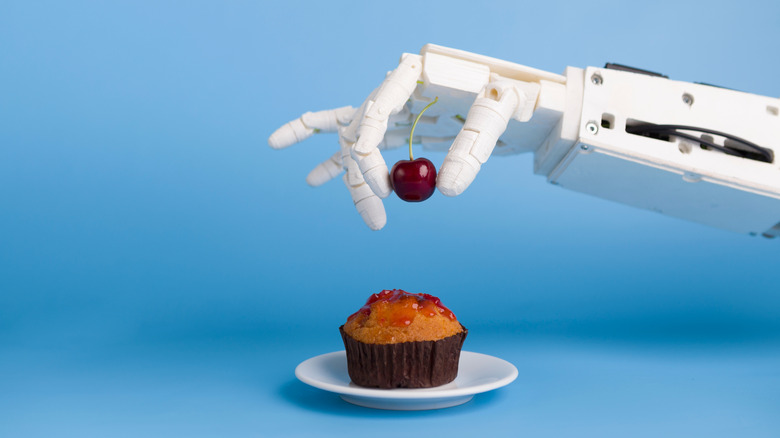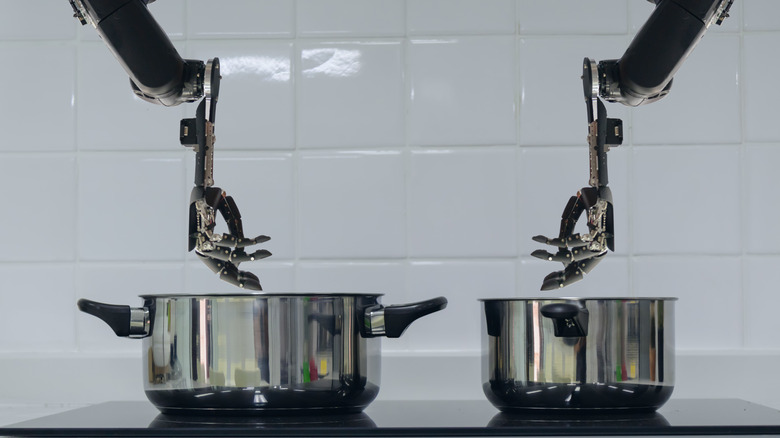This Robot Chef Has An Electric Tongue To Taste Your Food
The idea of using robots to help around the kitchen in restaurants is not new. They can be used to automate repetitive tasks that take up lots of time, which human chefs could be using for more important work. This idea has found its way to chain restaurants, like Chipotle, which is partnering with Miso Robotics to automate the creation of tortilla chips, as reported by CNBC. Wing Zone is another chain that has partnered with the Miso Robotics company, using robots to help cook wings within the restaurants. Most of these endeavors are in trial stages, but the idea itself has been gaining traction.
Because of this, researchers want to make more helpful and efficient robot chefs. One task that is very important while cooking that chefs use is the process of tasting as you go. This allows one to truly perfect the flavor profile of a dish, but it's not so easy for a robot chef to achieve. However, researchers from Cambridge have created a robot arm, which can actually taste salt in food in an accurate way.
How a robot tastes food
Creating robots that can taste food is not very straightforward, since taste involves many different factors. Most significantly is the fact that as we chew our food, taste changes. This is a process which researchers have not been able to replicate in a robot, until now. Cambridge researchers first created a robot that was trained to cook scrambled eggs with tomatoes, as reported by The Guardian. The robot also has a sensor, which allows it to taste the salt content of the dish, or salinity, as it cooks. This allows it to cook the eggs with the optimal salt levels.
After the dish was prepared, researchers blended it together in order to copy the process of food being chewed. Then, the robot was made to test the dish again to determine salinity levels after the food had been chewed. Apart from being able to tell if food is too salty, the robot can also determine if other ingredients are needed or how the dish should be cooked. It's a huge step in the creation of robot chefs, and paves the way for a future where even more aspects of taste could be tested by robots, such as sweetness, sourness or oiliness (via The Guardian). This could allow robots to cook food tailored to individual tastes, creating the perfect dish based on specific taste indicators.

